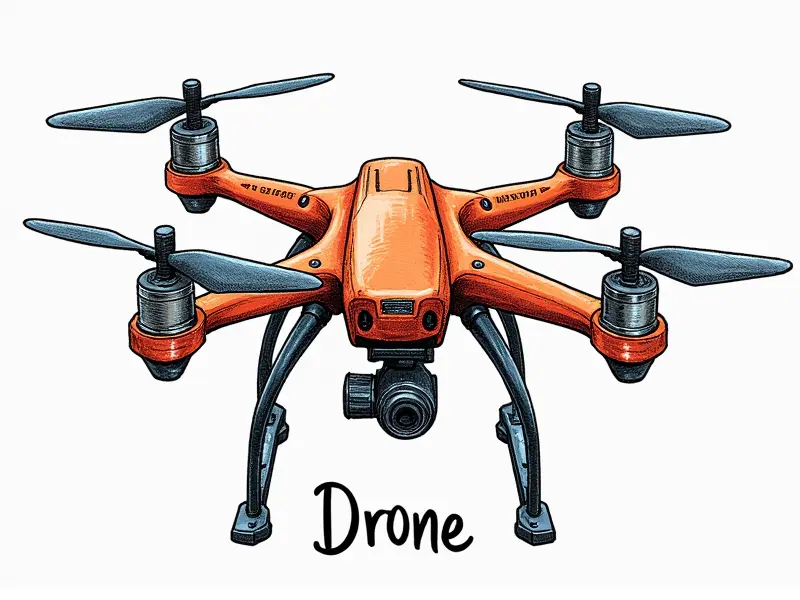How to fly a GePRC drone safely?

Stay Safe: GePRC Drone Flying Essentials
Flying a GePRC drone safely is crucial for both the pilot and those around you. Before taking flight, ensure your drone is in top condition by checking its battery level, propellers, and control system. Familiarize yourself with the drone's manual and understand all safety features such as return-to-home (RTH) and low-battery alerts.
Master Safe Flying Techniques for GePRC Drones
To master safe flying techniques, start by practicing in open areas away from people and obstacles. Learn to control your drone's altitude and speed gradually. Always keep the drone within visual line of sight (VLOS) and be prepared to intervene if it starts drifting off course.
Top 5 Safety Rules for GePRC Drone Pilots
- Rule 1: Check Your Gear: Ensure all components are functioning properly before each flight.
- Rule 2: Know the Regulations: Understand local and national laws regarding drone operation.
- Rule 3: Stay Grounded During Bad Weather: Avoid flying in high winds, rain, or fog.
- Rule 4: Respect Privacy: Do not fly over private property without permission.
- Rule 5: Always Have a Backup Plan: Be prepared for emergencies with spare batteries and tools.
Avoiding Common Risks When Flying GePRC Drones
Common risks include losing control of the drone, battery failure, or encountering unexpected obstacles. To mitigate these risks, regularly maintain your drone's components and keep an eye on its flight path at all times.
Stay Legal: Flying Regulations for GePRC Drones
Federal Aviation Administration (FAA) regulations require that drones be registered if they weigh more than 0.55 pounds (250 grams). Always check local laws and obtain any necessary permits before flying in restricted areas such as near airports or government buildings.
Emergency Protocols for GePRC Drone Pilots
In case of an emergency, follow these steps:
- Step 1: Activate Return-to-Home (RTH): If the drone loses signal or battery power is low.
- Step 2: Notify Authorities: Contact local authorities if your drone crashes in a public area.
- Step 3: Gather Evidence: Document any damage to property or injuries sustained during the incident.
Protect Your Gear: Maintenance Tips for GePRC Drones
Maintaining your drone is essential for safe and efficient operation. Regularly clean propellers, replace worn-out parts, and store the drone in a dry place to prevent corrosion.
Safe Takeoff and Landing with GePRC Drones
To ensure a smooth takeoff and landing:
- Select an Open Area: Choose a flat surface free from obstacles.
- Warm Up the Battery: Allow the battery to reach optimal temperature before flight.
- Perform Pre-Flight Checks: Inspect all components for damage or wear.
Avoid Mishaps: Safe GePRC Drone Flying Tips
- Tips 1: Use a Flight Simulator: Practice in virtual environments to improve your skills.
- Tips 2: Stay Informed About Weather Conditions: Avoid flying during adverse weather conditions.
- Tips 3: Keep Your Drone Updated: Install firmware updates and software patches regularly.
Secure Sky Control: Safe GePRC Drone Flight
To maintain secure sky control, always monitor your drone's flight path using a reliable controller. Use GPS tracking features to keep the drone within VLOS and avoid unauthorized airspace.
Top Safety Practices for GePRC Flyers
- Safety Practice 1: Regular Training: Attend workshops or online courses on safe flying techniques.
- Safety Practice 2: Follow Manufacturer Guidelines: Adhere to the manufacturer's recommendations for maintenance and operation.
- Safety Practice 3: Join a Community: Connect with other drone enthusiasts to exchange tips and advice.
Conclusion
Flying a GePRC drone safely requires diligence, knowledge of regulations, and adherence to best practices. By following the guidelines outlined in this article, you can enjoy your flights while minimizing risks and ensuring compliance with legal requirements. Remember, safety is paramount when operating any unmanned aerial vehicle.

